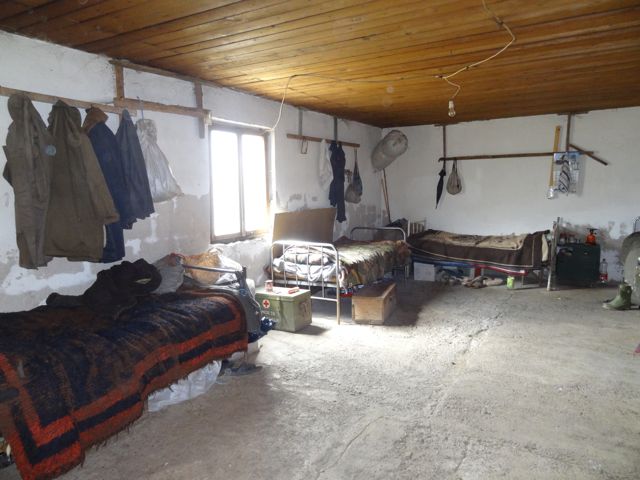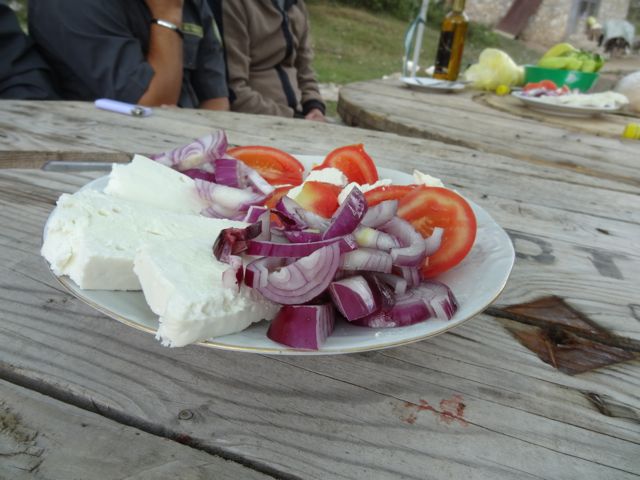56% of Macedonia is made up of hills and mountains. While driving through the countryside, a common citing is herds of sheep blending with the landscapes with an occasional Shepard companion. By luck, I happen to visit the home of a Macedonian Shepard, which was located far out in the middle of nowhere, and was able to speak to him about his life (through a translator of course).
The life of a Shepard is quite hard. He spends months away from his family, away from homely comforts and civilization. From the middle of May to the beginning of November, the Shepard locates his sheep in the mountainous pastures. During the rest of the year, he moves into valleys, to so-called winter pastures.
Often times 15-20 Shepards live together in a one-bedroom shack, that has nothing but basic necessities – beds, coat racks, table, lightbulbs, a wood-fire stove for cooking, and an outdoor shed used as a toilet. The Shepards spend most of the year taking care of sheep and ensuring they are well fed and safe. They use the milk to make cheese, which they sells in the markets and uses for their own consumption. They also makes fresh bread daily, which is a large part of their diet.

Dogs are an important part of a Macedonian Shepard’s life. Many Shepards breed and raise a particular breed of dogs known as, Sarplaninacs. Shepard dogs are loyal unpaid workers who keep watchful eyes on their herds. They make sure the sheep don’t wander off or are attacked by prey. In fact, as I was getting close to take pictures of the sheep, some of the dogs started barking and running towards me, warning me to keep away from their property!
Sheep breeding has remained a longstanding tradition and an important part of the economy in Macedonia. Close to half of the country’s land is used for agriculture. According to official statistical data (Statistical YearBook of Macedonia) the total number of sheep in Macedonia is about 2 300 000 heads (1 600 000 ewes). Two varieties of the Pramenka breed (Zackel, Tzurcana), Ovcepolian (60 percent) and Sarplanian (30 percent) and their crossbreeds with various Merino breeds are popularly found in Macedonia.
Meat, milk and wool are the main productions from sheep rearing. Lamb is a staple in food and is also exported across Europe. According to United Nations Commodity Trade Statistics Database, goat and lamb account for over $22 million worth of exports. However, a significant part of Shepard’s income comes from cheese made from sheep milk, marketed as white cheese in the local markets. It is a fresh, yet sometimes salty homemade cheese, resembling a Feta. Each region of Macedonia imparts its own flavor into the cheese, making the variations interesting and palatable. No meal in Macedonia is complete without white sheep cheese!



